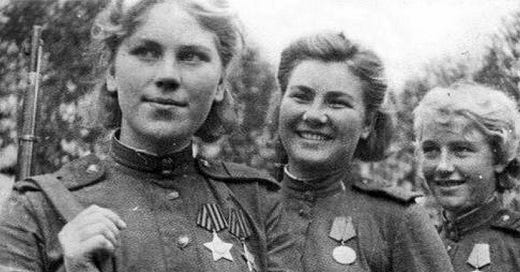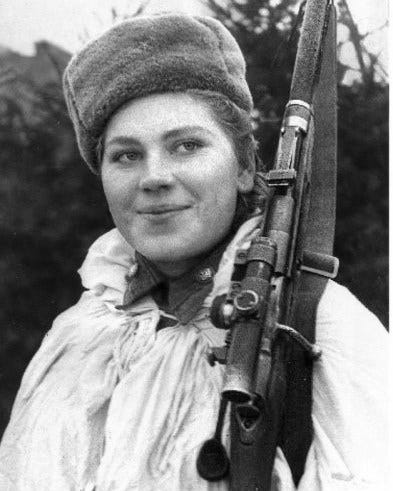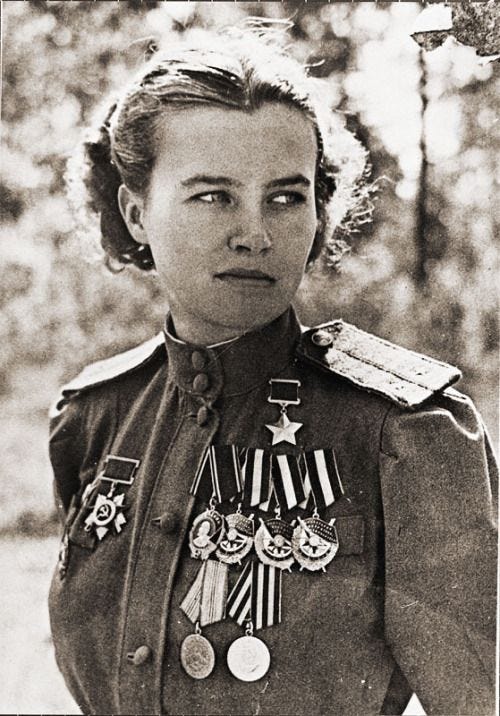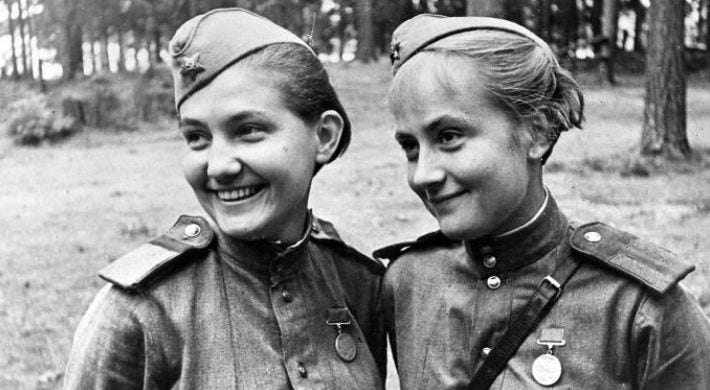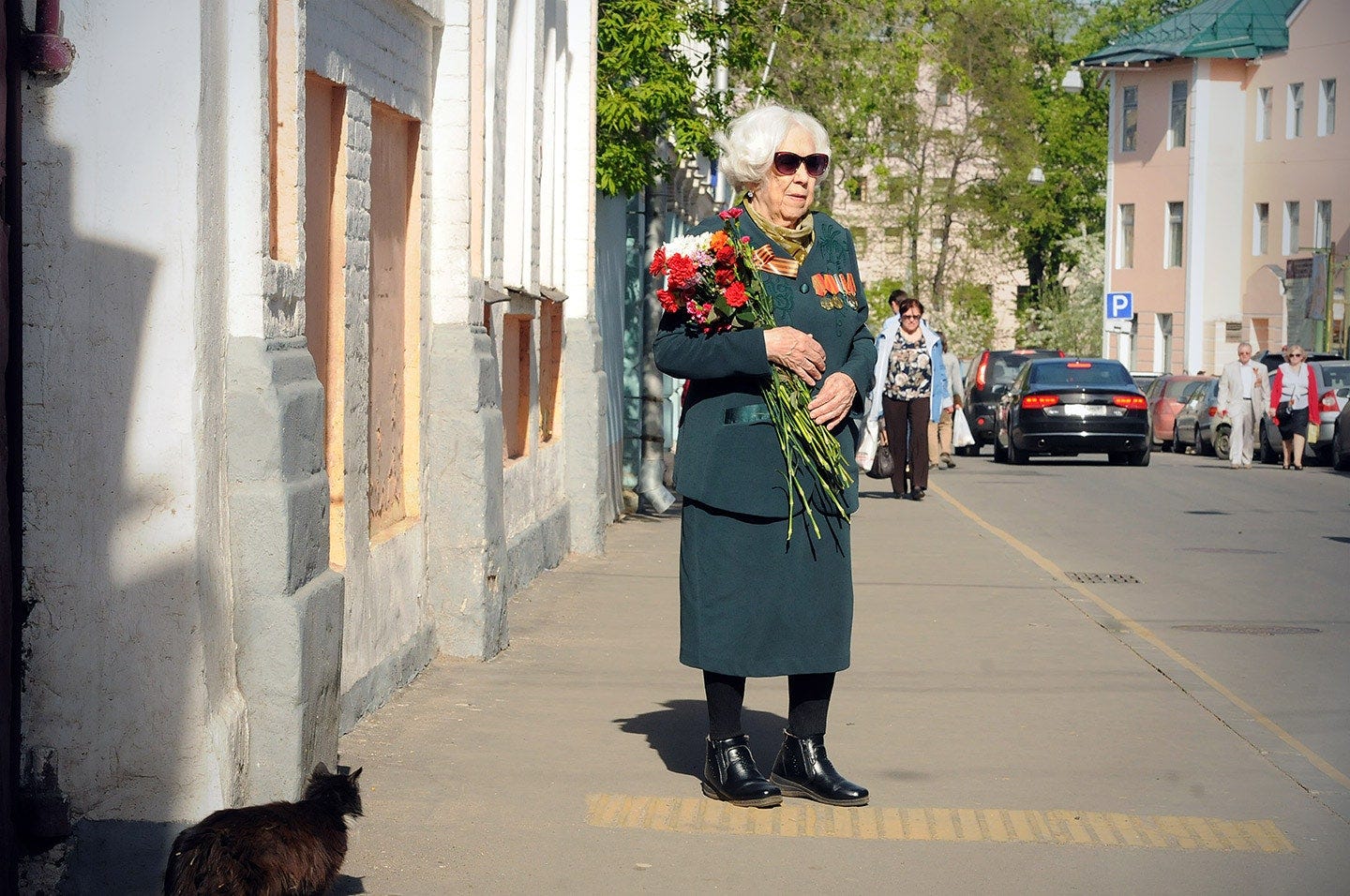"I am ready to head back to the front lines again, as if there were some force pulling me there."
"I am ready to head back to the front lines again, as if there were some force pulling me there. How can I explain it?... Some think I have a boyfriend on the front, but I don't know anyone, I want to fight! I want to see real war." -Sgt. Roza Shanina, sniper
A member of the glider school at the Kiev Young Pioneer Palace and a Moscow Aviation Institute graduate, Natalya Meklin's choice to join the air force during WWII was a natural one. She joined the female aviation regiments in Oct. 1941 and was assigned to the 588th Night Bomber Regiment, also known as the Night Witches. Initially she trained as a navigator, but eventually switched to pilot in May 1943.
By the end of the war, Meklin flew approximately 980 night missions and dropped nearly 147 tons of bombs on enemy territory. On Feb. 23, 1945 she was awarded Hero of the Soviet Union. Meklin survived the war and re-enlisted in 1947, studying languages. She attended Military Institute of Foreign Languages and worked as a translator until her retirement in 1957. She and fellow airwoman, Irina Rakobolskaya, published their experiences in They Called Us Night Witches. Meklin died in June 2005.
Some Soviet women volunteered to be Red Army sappers, another name for combat engineers. Sappers worked to destroy fortifications, lay and clear minefields, demolition, prepare defenses, and any other construction the army needed. They also provided infantry support. These engineers were significant to the success of the Red Army.
Svetlana Nikanorovna Byashkina, 90
Byashkina was 16 years old when the war began. “I learned about the invasion by radio, and it was a real shock for me,” she said. “I knew it would take time, but I never doubted our final victory.” During the war, Byashkina had the grim task of notifying families of deceased soldiers that their loved ones had died in service.
https://www.vanityfair.com/news/photos/2015/05/red-army-women-wwii-veterans
